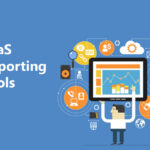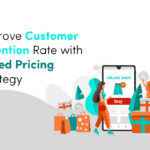
Understanding the Metrics, Tools, and Insights of SaaS Product Usage Analytics
Imagine being the best at making a product and yet having no metric to actually judge the success of that product. That is how it feels like to own a company with a stellar product but with little to no investment in product usage analytics. SaaS product usage analytics are crucial in today’s world owing to them informing us with critical information regarding the success or failure or even the way a product is being used.
In this blogpost, we will firstly be defining what are SaaS product usage analytics. Then defining how to start quantifying the SaaS product usage metrics to help calculate the success of a product, before finally offering a list of platforms that offer the best product usage analytics.
What is Product Usage Analytics?
Product Usage Analytics is a data-driven process in which software assemble and deeply analyze the data that they have collected from assessing the interactions and engagements of a product’s users. By using these analytics, businesses get crucial insights into the behavior of their consumers and are thus able to identify trends in the consumers’ usage. These trends, and more importantly, the user’s assessment of it can be used to leverage newer trends in helping solve pain points. Ways in which pain points can be resolved is through businesses improving the experience of the user, optimizing the features of the product, and just generally increasing the overall customer happiness by metrics such as user engagement, feature uptake, and performance.
By doing all of this, businesses are able to put all their focus on efforts to steering their business’s growth and thereby gaining a distinct edge in the marketplace. All in all, product usage analytics has become arguably one of the most important ways in which businesses can monitor their consumers’ behavior and spending patterns and, in doing so, leverage their business to success.
Read more: Navigating the World of SaaS for Enterprise: Metrics, Insights, and Successful Examples
Understanding SaaS Product Metrics: A Brief Guide
Understanding how your product is being used by people is critical to developing a better solution that satisfies their demands. Traditionally, marketers depended on consumer surveys and interviews to learn what their customers liked about their products. Therefore, in the following guide we will go over important metrics to help you understand the dos and don’ts of defining robust SaaS product metrics:
1. Recurring Monthly Revenue (MRR)
MRR is the consistent monthly income provided by subscriptions. It is a critical statistic for determining revenue stability and growth. Tracking MRR enables firms to evaluate the health of their subscription-based model and measure the efficiency of client acquisition and retention activities.
2. Cost of Customer Acquisition (CAC)
CAC calculates the cost of gaining a new client, including marketing, sales, and other overhead. A lower CAC relative to customer lifetime value (CLTV) is good, suggesting a strategy for long-term growth.
3. The Rate of Churn
The churn rate is the percentage of customers that quit their subscriptions within a certain time period. High churn may stifle growth, so it’s critical to figure out why customers leave and develop ways to minimize it.
4. ARPU (Average Revenue Per User)
The average revenue earned by each client is calculated by ARPU. It is useful for segmenting client cohorts and assessing the value each customer brings to the firm.
5. Customer Lifetime Value (CLTV)
CLTV calculates the overall income a client is likely to make over the course of their service engagement. Understanding CLTV improves marketing and retention efforts and helps establish the long-term health of client relationships.
6. Gross Margin
The gross margin of a SaaS product is calculated by deducting the cost of goods sold (COGS) from total revenue. Maintaining a strong gross margin is critical for long-term success.
User data gathering helps businesses to have a comprehensive understanding of what their consumers do on their websites. There is an enormous amount of data accessible to collect, ranging from where a user came from to how long it took to purchase a product.
Best Software for Product Usage Analysis: A List
That said, it is still important for you to get a sense of some of the best market-leading software to help you with SaaS product usage analysis, and so here is a list of software that do just that:
1. SubscriptionFlow: SubscriptionFlow is a popular subscription management platform that gives customers total control over the five performance measures stated above. The reason for its success, however, is not limited to the plethora of services that it provides, but also to the relatively lower cost that it provides and its helpful sales team that makes the process of onboarding simple for its first-time users. This program is ideal for small to medium businesses and other businesses who do not want to spend too much money on subscription management.
2. Amplitude: Amplitude is a robust product analytics platform that enables organizations to obtain deeper insights into user behavior in online and mobile apps. It has a broad collection of features that are meant to generate important data-driven insights, making it a must-have tool for product managers, marketers, and data analysts.
Amplitude’s capacity to measure and monitor product uptake is one of its most notable features. It enables organizations to investigate how people interact with the features of their digital goods over time. User funnel research enables firms to make data-informed adjustments by pinpointing exactly where customers may be slipping off or facing difficulties in their journey.
3. Google Analytics: This is Google’s popular analytics tool that offers its users a list of crucial insights into monitoring the traffic on the website and app. This allows the business to further improve their service by looking at the data that has been collected. Other benefits of Google Analytics include it letting you analyze unlimited amounts of data as opposed to most other software that place either a limitation on data or charge extra for more data. Furthermore, Google Analytics also offers a more holistic understanding of user data that businesses can leverage to not just understanding but also predicting the future use of their consumers to provide an ideal user experience. It also integrates with other Google services like Google Ads and Google Search Console to provide a complete picture of your online presence.
Read more: Retention Management System – How Data Analysis Helps with Churn Reduction
The bottom line
In today’s corporate context, the importance of SaaS product consumption metrics cannot be emphasized. As stated in this article, it is analogous to having a fantastic product but having no way of measuring its performance. These analytics give crucial insights into user habits, preferences, and pain spots, enabling organizations to improve user experiences, optimize functionality, and increase customer happiness. The metrics highlighted, ranging from MRR and CAC to churn rate and CLTV, are critical tools for assessing product performance and driving growth initiatives.
Furthermore, the blog provides sophisticated technologies such as Amplitude and Google Analytics, each with unique benefits. Amplitude’s emphasis on product analytics, such as feature uptake and user funnel analysis, making it an invaluable resource for product managers and marketers. Google statistics, on the other hand, provides in-depth site and app statistics, including traffic sources and user demographics, making it a must-have for online enterprises.
In a world where data drives decision-making, adopting SaaS product use analytics is a strategic essential for organizations seeking to prosper and adapt in the digital era. Book a demo with SubscriptionFlow and start making the best of its features of product usage analytics!










